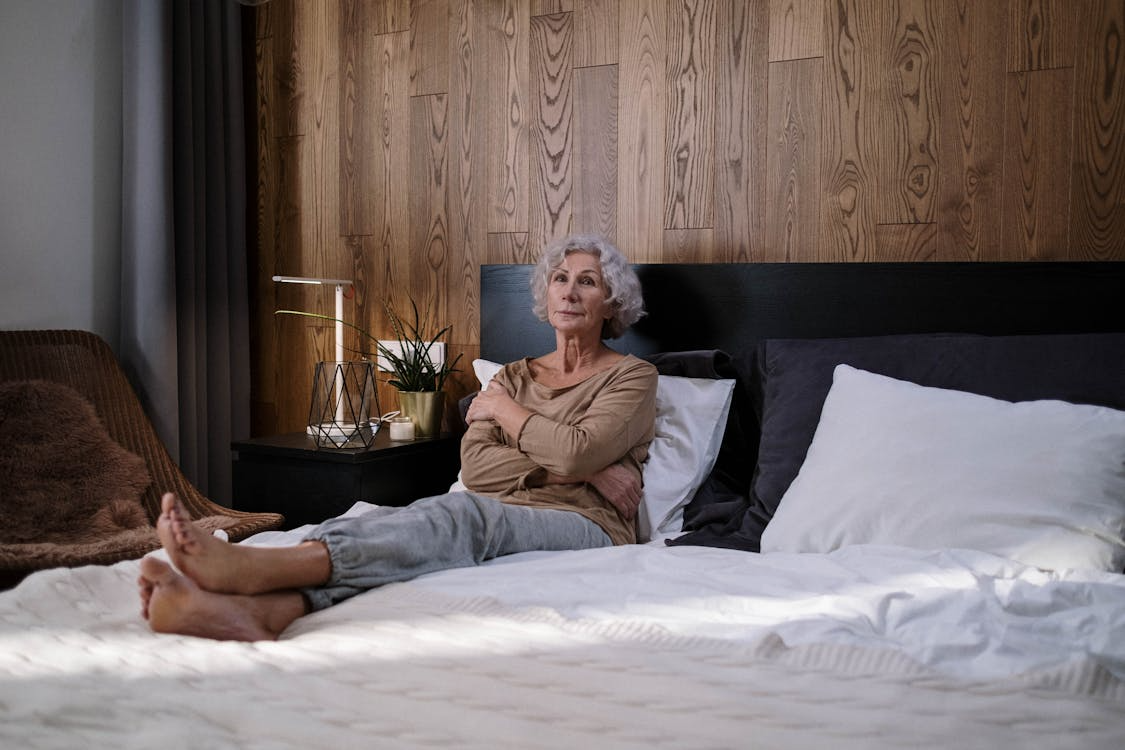
Peter Steenstrup’s life changed in a single day in 2020. A spinal tumour left him a paraplegic, suddenly confronting a reality he never expected—his own home was no longer suitable.
Five years on, he still could not return to his colonial Sherwood house, forced to live apart from his wife and family due to preventable accessibility barriers.
Peter’s struggle has become the centre of a heated political debate that could shape housing for millions of Australians. The Queensland Productivity Commission recommended the state consider opting out of new accessibility standards for home construction, drawing fierce opposition from disability advocates.
Their concern is that such a move could leave vulnerable Australians even further behind.
The debate matters not just to Peter, but to an estimated 4.4 million Australians living with disability and a generation of baby boomers approaching their senior years. For many, accessible housing is not a luxury—it is essential for independence, dignity, and family unity.
In this article
The Standards Under Fire
The National Construction Code introduced accessibility requirements in 2022, mandating step-free entry, wider doorways, hobless showers, reinforced bathroom walls for future grab rail installation, and toilets at entry level. These features, though they might appear minor, represent the difference between living independently and facing isolation.
Queensland was among the early adopters of these standards, phased in from October 2023. They were based on the Liveable Housing Design Guidelines’ 'silver standard', the most basic level of accessibility certification.
What Do The Accessibility Standards Actually Require?
Step-free path from street to front door
Wider doorways (850mm minimum)
Hobless shower in at least one bathroom
Reinforced bathroom walls for future grab rails
At least one toilet on the entry level
Wider internal corridors and doorways
Appropriate lighting and slip-resistant surfaces
Before the standards, only about five per cent of new homes met basic accessibility requirements, leaving families like Peter’s with few options and forcing separation. For many Australians, accessible housing has been a lifelong struggle—one that begins the moment a disability is acquired or ageing challenges arise.
The Great Divide: Which States Are In, Which Are Out?
Australia’s adoption of accessibility standards has created a postcode lottery. Queensland, Victoria, Tasmania, the ACT, and the Northern Territory adopted the standards, while New South Wales, South Australia, and Western Australia opted out. This uneven approach means mobility-challenged Australians face drastically different housing prospects depending on where they live.
A person relocating from Brisbane to Sydney or Perth could find dramatically reduced options, while someone moving from Melbourne to Adelaide encounters the same barriers in reverse. This inconsistency compounds the challenges faced by families planning long-term care or relocation.
The Numbers Game: Costs vs Benefits
The construction industry argues the costs of compliance are significant. Master Builders Queensland estimated that accessibility and energy efficiency requirements together add between $22,500 and $44,500 to building costs. However, the actual costs are often far lower, particularly when compared to retrofitting homes.
Research shows that compliance for new construction can be as little as one per cent of the average building cost. Retrofitting existing homes to meet basic accessibility standards, by contrast, averages around $20,000—a cost roughly 20 times higher than incorporating accessibility features from the start.
Did you know?
The cost difference is dramatic It's roughly 20 times more expensive to modify an existing home than to build accessibility features from scratch.
Spinal Life Australia estimates the community cost of inaccessible housing between $3 billion and $6.7 billion, factoring in increased hospital stays, aged care admissions, and home modification expenses. Advocates argue the economic case strongly favours mandatory accessibility standards, even beyond the moral and social imperatives.
Why This Matters More Than Ever
Australia faces a demographic shift that intensifies the need for accessible housing. The baby boomer generation represents over five million Australians who will increasingly require accessible homes as they age. Features like slip-resistant surfaces, step-free entry, and wider corridors reduce falls and hospitalisations, enabling people to age safely in their own homes.
Queensland’s broader housing crisis adds urgency. Construction productivity has dropped nine per cent since 2018, resulting in 77,000 fewer dwellings than expected. This shortage intersects with the accessibility debate, amplifying the challenges for families seeking suitable homes.
Industry vs Advocates: The Battle Lines
The construction industry has argued for voluntary standards. Master Builders Queensland Executive Manager Michael Hopkins stated: 'Where homeowners would like to incorporate them we think that's perfectly appropriate. But in other cases where the cost might be the difference between a project proceeding or not proceeding, we'd like to give homeowners the choice.'
Disability advocates counter that voluntary measures have repeatedly failed. Spinal Life Australia CEO Mark Townend argued that relying on the industry to voluntarily deliver accessible housing has produced no measurable results, pointing to decades of poor uptake.
'We're a quarter of the way into the 21st century and this idea sends us backwards. Very shortly, we're gonna have the Olympic Games and Paralympic Games. They're gonna see Queensland, how we treat the most vulnerable in our society.'
The Olympic Factor
Peter’s reference to the Brisbane 2032 Olympic and Paralympic Games highlights the stakes. With the world watching, Queensland faces scrutiny over its commitment to accessibility and inclusion. Paralympic athletes demonstrate what is possible when barriers are removed, making the debate around accessible housing particularly poignant.
What This Means for Queensland Families
Queensland’s decision affects more than policy—it affects lives. Homes built with accessibility features may have broader market appeal as the population ages, offering potential investment returns despite higher upfront costs. For families with elderly relatives or members with disabilities, the choice could determine whether multigenerational living remains feasible or families face separation like Peter’s.
If you're planning to build or buy in Queensland: new homes built after October 2023 should include basic accessibility features if standards remain, existing homes without these features may require costly modifications later, consider accessibility in your long-term housing plans regardless of current needs, and check with builders about compliance costs and what features are included.
Looking Forward: October Decision Looms
The Queensland government awaited the full Queensland Productivity Commission report, due to be handed to the treasurer on 24 October, before considering policy changes. The decision could influence other states and set a precedent for national progress on accessible housing.
What's Really At Stake for Queensland
- Personal impact: Thousands of families could face housing separation like Peter Steenstrup's
- Economic implications: Short-term building costs vs. long-term community savings in billions
- International reputation: Olympic host city's commitment to accessibility and inclusion
- Precedent setting: Queensland's decision could influence other states' policies
- Demographic reality: Over 5 million baby boomers approaching senior years need accessible housing
For Peter, the debate is deeply personal. His hope to return home depends on major renovations that could have been avoided with early accessibility standards. He explained: 'There's no extra real-world costs involved, we've just got to lay it out in a way that's specific to my needs. We need this in place as a bare minimum just to support our population.'
What This Means For You
Accessibility standards are not just regulations—they are essential for independence, dignity, and keeping families together. The costs of incorporating these features in new homes are minimal compared with the expensive and disruptive process of retrofitting existing houses, making early planning far more practical.
Yet, inconsistent adoption across states has created a postcode lottery, meaning that where you live can dramatically affect your housing options if you have a disability or mobility challenges. With the upcoming Brisbane 2032 Olympics, Queensland’s commitment to accessibility will be under international scrutiny, highlighting the importance of inclusive communities. For seniors and families across Australia, these issues are deeply personal: choosing the right home now can determine whether you stay connected to your loved ones, avoid costly renovations, and enjoy a safe, accessible environment for years to come.
Accessible housing isn’t just about ramps and wider doorways—it’s also tied closely to financial security and long-term planning.
Understanding how housing costs can affect your income can help you make smarter choices when looking for a home that meets your needs.
One real-life example explores the challenges of relying on government support when housing options are limited or expensive.
Read more: Retirement ‘Nightmare’: Why Millions of Australians Could Be Stuck Relying on the Age Pension
NCC 2022 update | Queensland Building and Construction Commission — Outlines the accessibility requirements for new homes from 1 October 2023, including step-free entry and wider doors and hallways.
https://www.qbcc.qld.gov.au/news/ncc-2022-update
Accessible housing design to only be used across half of Australia | Disability Support Guide — Explains the National Construction Code accessibility features and notes that adoption varies across states.
https://www.disabilitysupportguide....sign-to-only-be-used-across-half-of-australia
NCC 2022 update | Queensland Building and Construction Commission — Details the phased introduction of the Modern Homes accessibility and energy efficiency standards from October 2023.
https://www.qbcc.qld.gov.au/news/ncc-2022-update
Accessible Housing to be Enshrined in National Construction Code – Architecture . Construction . Engineering . Property — Reports that before the new standards, only about 5% of new homes met basic accessibility requirements.
https://sourceable.net/accessible-housing-to-be-enshrined-in-national-construction-code/
Understanding the National Construction Code’s accessible housing standards | Disability Support Guide — Lists which states and territories have adopted or opted out of the new accessibility standards.
https://www.disabilitysupportguide....l-building-codes-accessible-housing-standards
Jensen Hughes | Changes to Accessible Housing — Confirms which states are adopting the standards and notes the benefits for older populations.
https://www.jensenhughes.com/pacific/insights/changes-to-accessible-housing
Livable Housing Design Standard | Department of Housing and Public Works — States that building a new home to comply with accessibility standards can cost as little as 1 per cent of the average construction cost.
https://www.housing.qld.gov.au/initiatives/modern-homes/livable-housing-design-standard
Livable Housing Design Standard | Department of Housing and Public Works — Provides the estimated cost of retrofitting existing homes to meet accessibility requirements, around $20,000.
https://www.housing.qld.gov.au/initiatives/modern-homes/livable-housing-design-standard
Interim report reveals drop in construction productivity—QLD Treasury — Notes that Queensland construction productivity has dropped 9 per cent since 2018, resulting in 77,000 fewer dwellings.
https://www.treasury.qld.gov.au/newsroom/interim-report-reveals-drop-in-construction-productivity/
Have you or your family faced challenges finding accessible housing in Australia?







